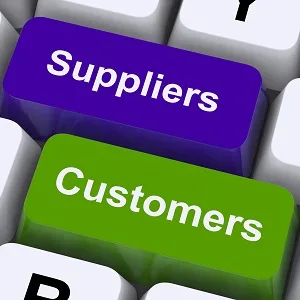The predictive education bazaar that we know as SXSWedu was held this year in Austin, Texas from March 7-10. The SXSWedu® Conference & Festival is a part of the SouthbySouthwest family of conferences, fostering “innovation in learning by hosting a diverse and energetic community of stakeholders from a variety of backgrounds in education.” Over 6,000 international attendees, exhibitors, thought leaders, and other innovators in the education space gathered to get a glimpse of the future of innovation in schooling.
Last month I wrote a piece about perceived price gouging and vendor exploitation in the educational market at SXSWedu entitled “Procurement Controversy Swells at SXSWedu in Austin.” While accusations were flung wildly across the room, those doing the slinging were also major players and decision makers in education on the east coast. The panelists serving on the “Begging for Disruption: EdTech Procurement” panel included Harold Levy (past Chancellor of the New York City Schools), Hal Friedlander (past CIO of the NYC Schools), Celina Morgan-Standard (NY Academy of Sciences), Karl Rectanus, (LearnTrials), Fiona Hollands, (Center for Cost Effective Education, Columbia University), Leonard Medlock (EdSurge), and Nicole Neal (NoodleMarkets).
What solutions did this panel recommend for remedying the stiff and recurring ed-tech procurement challenges faced by schools? Which remedies were suggested for the unwarranted pillaging of schools by manufacturers, vendors, and integrators alike? Here are their answers:
Cost it Out
Fiona Hollands from the Center for Cost Effective Education (Columbia University) recommended schools use their new CostOut tool. Developed under a grant from the U.S. Department of Education, Institute for Education Sciences, CostOut “prompts the user to list all ingredients required to implement an intervention, from teachers to facilities to equipment, and to assign appropriate prices based on the quantity and quality of ingredients needed. The system then calculates the total costs and cost per student of the intervention.” According to their website, “if the user has ingredients and effectiveness data on several interventions that aim to improve the same educational outcome, the system can generate cost-effectiveness comparisons that can inform resource allocation decisions, for example, helping a district policymaker decide which of three alternative reading programs to implement in the district.”
 According to Hollands, CostOut automatically provides any necessary adjustments for inflation, geographical location, and for multi-year programs, and the proposed timespan of the investment. “It provides a database of around 700 prices of educational resources to help users estimate the costs of educational programs.” For example, there are 70 different teacher salary levels, culled from publicly available surveys. Users can also easily build their own personal price databases to plug in salary or other data specific to their own school or district. The goal of CostOut, according to Hollands, is to determine the true “costs and effectiveness of educational products; and whether [these products] help students achieve better educational outcomes”. The system looks at full implementation cost (also known as total cost of ownership: technical support, professional development, and other hidden costs). The CostOut tool is provided free to schools. The Center also provides consulting assistance to help schools and districts conduct efficacy research and assist vendors in “determining the pedagogical soundness of their product.”
According to Hollands, CostOut automatically provides any necessary adjustments for inflation, geographical location, and for multi-year programs, and the proposed timespan of the investment. “It provides a database of around 700 prices of educational resources to help users estimate the costs of educational programs.” For example, there are 70 different teacher salary levels, culled from publicly available surveys. Users can also easily build their own personal price databases to plug in salary or other data specific to their own school or district. The goal of CostOut, according to Hollands, is to determine the true “costs and effectiveness of educational products; and whether [these products] help students achieve better educational outcomes”. The system looks at full implementation cost (also known as total cost of ownership: technical support, professional development, and other hidden costs). The CostOut tool is provided free to schools. The Center also provides consulting assistance to help schools and districts conduct efficacy research and assist vendors in “determining the pedagogical soundness of their product.”
Use Curating Agencies
Another solution offered for ed-tech procurement involves the use of intermediary agencies that can do the heavy lifting for schools. Three panelists represented such agencies, respectively, LearnTrials, EdSurge, and NoodleMarkets. LearnTrials provides “an evidence based-platform, equipping educators to determine which technologies will work best for their needs, whether that means student outcomes, budget needs, operational impact, or their budgets,” stated Karl Rectanus. Hosting more than 10,000 educators on their current system, LearnTrials hosts not only a “large product library and ed-tech database, but also a business process management tool that can integrate data sets like student achievement, usage patterns, and financial information to do very rapid analyses to determine what is most effective, to inform better discovery, and better procurement.” He explained: “Our Learn Trials integrates public data on every school and district in America, and offers integrated business process management tools (like an RFP configurator) to launch an open and convenient RFP process, to operate pilots more efficiently, with better data. We can monitor evaluation and usage, gaining visibility into what is being used in districts.” He gleamed: “It allows the demand side to be more demanding.”
Similarly, EdSurge provides a concierge service for educators and vendors. “Rigorous scaffolding, a database of products, and built in assumptions with the desired goals and outcomes of educators” is the hallmark of the EdSurge product. “It’s like a dating site for technology procurement,” stated Leonard Medlock, senior product manager at EdSurge.
NoodleMarkets offers another intermediation service for educators, helping them narrow choices and manage decisions. “We help educators distill the products and services that are out there,” offered Nicole Neal, “while leveling the playing field for vendors, to bring them visibility in the marketplace.” The tool is free for educators, and vendors pay an access and referral fee.
Meet the TEC Consortium
To tackle the ed-tech procurement challenge head on, Harold Levy helped form the Technology for Education Consortium think tank, or TEC. Formed with the assistance of Gates Foundation funding, the mission of this think tank is to “bring transparency, efficiency, and collaboration to K-12 schools engaged in evaluating and purchasing ed-tech products and services. We believe that greater transparency and better information will allow school districts to improve results, reduce costs and support new product development.”
Levy’s concerns are that the school administrators who are “making the tech decisions are often twenty years out of the classroom, so they don’t know how tech savvy the students or teachers really are—it’s the wrong people, making bad decisions, for the best of reasons. “ He worries: “Schools lack critical judgement to determine efficacy.” In steps the newly formed TEC to remedy the problem.
Analyst Comment
Adding a little scrutiny
The intent of the procurement panels held at the SXSWedu conference was to show a new way forward in ed-tech purchasing practices, disrupting the status quo. But I don’t see anything new here. It’s all been tried before. Similar solutions have been around for a long time, in fact. And these ‘new’ intermediating agencies smell, sound, and taste like, well, just more bureaucracy. More gatekeepers, if you will. (Over the years I have observed that such curation agencies often serve to raise the cost of technology implementation in schools, not save them money.)
Now, please understand where I am coming from. I am a decades-long educator and technology director, someone who served as a huge ed-tech purchaser/decision maker in very large school districts. I do not agree with the premise, assumptions, conclusions, or action recommendations of this august panel. Others in the SXSWedu audience also had their doubts. In my first article, I explained how these educational experts were quick to blame only vendors, giving a pass to educators. Yes, it’s certainly easy to blame vendors and make every effort to slap controls on them. But contrary to the opinions of Levy et al., districts are indeed culpable in terms of poor procurement practices: districts still rush to hire industry IT people who don’t understand the educational endeavor or its unique challenges; districts and their chosen IT leaders often make procurement decisions that don’t fly in face of the reality of most classrooms, rarely involving teachers in decision making; and districts don’t prioritize technology. (This last concern ensures that, in most cases, ed tech purchases become an afterthought.) So let’s not just blame the ed-tech industry. There’s plenty of blame to go around. –Len Scrogan

